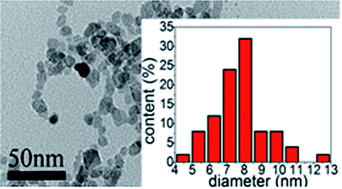Phase and shape controlled VO2nanostructures by antimony doping†
Abstract
Quasi-spherical VO2

* Corresponding authors
a
State Key Laboratory of High Performance Ceramics and Superfine Microstructure, Shanghai Institute of Ceramics (SIC), Chinese Academy of Sciences (CAS), Dingxi 1295, Changning, Shanghai, China
E-mail:
yfgao@mail.sic.ac.cn
Fax: +86-21-5241-5270
Tel: +86-21-5241-5270
b Graduate University of Chinese Academy of Sciences, Yuquanlu 19, Beijing, China
c Shanghai Institute of Ceramics (SIC), Chinese Academy of Sciences (CAS), Dingxi 1295, Changning, Shanghai, China
d
School of Materials Science and Engineering, Georgia Institute of Technology, 771 Ferst Dr. N.W., Atlanta, GA 30332, USA
E-mail:
zhong.wang@mse.gatech.edu
Tel: +1-404-894-8008
Quasi-spherical VO2

 Please wait while we load your content...
Something went wrong. Try again?
Please wait while we load your content...
Something went wrong. Try again?
Y. Gao, C. Cao, L. Dai, H. Luo, M. Kanehira, Y. Ding and Z. L. Wang, Energy Environ. Sci., 2012, 5, 8708 DOI: 10.1039/C2EE22290F
To request permission to reproduce material from this article, please go to the Copyright Clearance Center request page.
If you are an author contributing to an RSC publication, you do not need to request permission provided correct acknowledgement is given.
If you are the author of this article, you do not need to request permission to reproduce figures and diagrams provided correct acknowledgement is given. If you want to reproduce the whole article in a third-party publication (excluding your thesis/dissertation for which permission is not required) please go to the Copyright Clearance Center request page.
Read more about how to correctly acknowledge RSC content.
 Fetching data from CrossRef.
Fetching data from CrossRef.
This may take some time to load.
Loading related content
